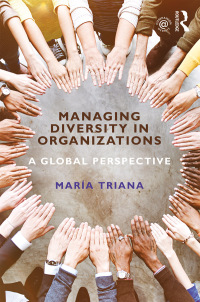A couple of days after Leslie Miley posted his message about the lack of demographic diversity at
Question:
A couple of days after Leslie Miley posted his message about the lack of demographic diversity at Twitter (described in the opening case of this chapter), the senior vice president of engineering, Alex Roetter, posted a response. He began by admitting that many people, himself included, have blind spots and that one of his is to resort to engineering-driven and quantitative solutions to solve problems. He says the statements attributed to him were not accurate or complete and represent something far from his intention, which means that he miscommunicated, and for that he said he was sorry (Guynn, 2015; Mohan, 2015; Roetter, 2015).
Roetter then turned his attention to the action plan that Twitter is taking in order to improve diversity within the organization. He outlined several specific goals for the coming year which Twitter has made public, and he explained that the company has shared its gender and ethnic numbers publicly so that they can be held accountable (Mohan, 2015). Here are the specific items he outlined, some of which had been made public earlier in 2015 in an announcement made by Twitter about its diversity goals for 2016
(Ungerleider, 2015).
First, Twitter will require inclusion training of their workforce starting in January. The training, including subsequent booster sessions, will continue throughout the lifecycle of the employee or intern, including during new hire orientation, interviewer training, manager training, and promotion committee training. Second, they are increasing the clarity in their ability to view representation of underrepresented minorities at all stages, from hiring to promotion, and reviewing their employment practices. They will also analyze retention rates. Third, they were developing actions related to diversity which managers at all levels of the engineering team would be expected to implement, not just top-level representation goals. Finally, through the collaboration of employee resource groups, their recruiting team, and their diversity and inclusion team, they are reaching out to both new and experienced graduates from minority groups. Roetter stated, “We are and will be recruiting the best talent from Hispanic-Serving Institutions and Historically Black Colleges and Universities. We are also supporting professional gatherings that serve underrepresented groups, like the Society of Hispanic Professional Engineers” (Roetter, 2015).
Discussion Questions:
1. Do you think the senior vice president’s response to the diversity issues raised in the opening case of the chapter was appropriate?
Why or why not?
2. Does the four-part action plan outlined by the senior vice president seem like a reasonable approach to handling the lack of diversity at Twitter? Why or why not?
3. Twitter plans to recruit the best talent from Hispanic-Serving Institutions and Historically Black Colleges and Universities. If this is a new recruiting outlet for Twitter, do you think this could be seen by some employees as lowering the bar for recruitment? What could Twitter do to avoid perceptions that standards have been lowered?
Step by Step Answer:

Managing Diversity In Organizations A Global Perspective
ISBN: 9781138917026,9781317423676
1st Edition
Authors: Triana Maria





